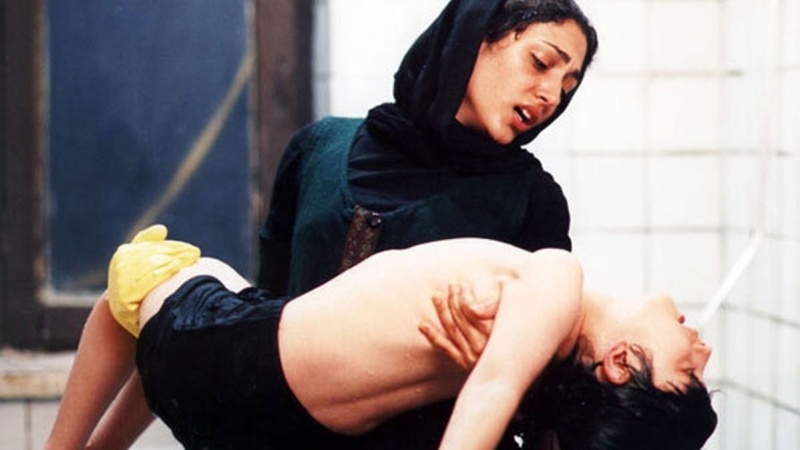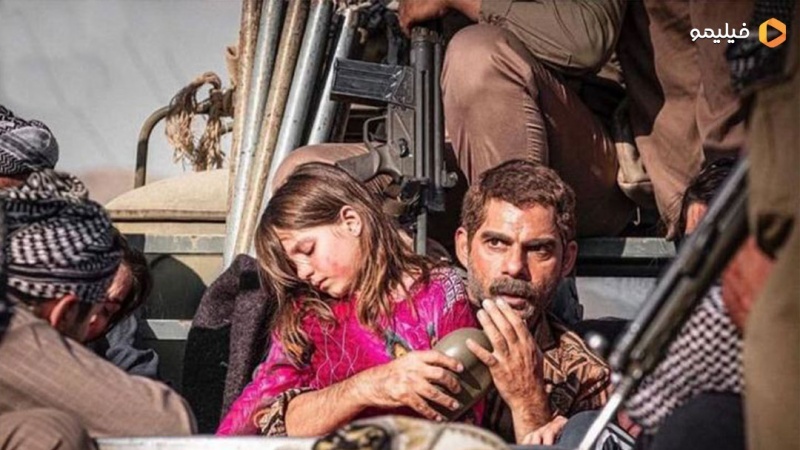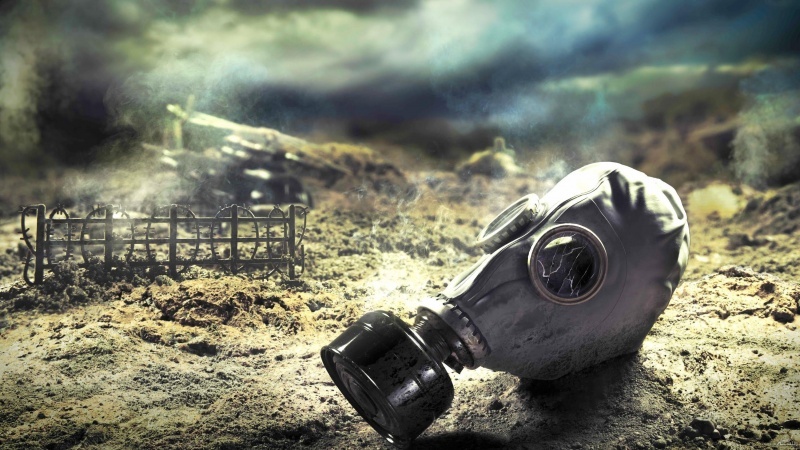Iranian artists narrate Saddam's chemical crimes under the West's aegis
Pars Today - Despite international prohibition of usage of chemical weapons, the army of the former Iraqi dictator, Saddam Hussein, with the support of a few Western countries, like Germany, scores of times attacked Iranian combatants and even civilians of border cities and villages with chemical bombs and rockets during the 8-year war.
One of the greatest chemical attacks of Saddam's army occurred in the region of Sardasht in west Azarbaijan province. According to Pars Today, Iraqi bombers attacked the Iranian border city of Sardasht on June 28 and dropped chemical bombs on the innocent people of the city. This day has been dubbed as "The Day of Combat against Chemical and Biological Weapons".
Humanitarian law on the rules of war are among the oldest inclinations of the international law. Among the most important regulations of war mention can be made of the 1899 and 1907 Hague Conventions, the 1949 quartet Geneva conventions and the two additional protocols in 1977. All these conventions, emphasize on prohibition of the usage of chemical weapons.
During the 8-year war imposed against Iran by the West through the Iraqi dictator, Saddam Hussein, Iran was the target of chemical attacks of the Ba'athist regime for 252 times. These chemical attacks resulted in martyrdom of thousands of mainly innocent civilians and injury of more others. Many of the injured are still suffering from the wounds of those attacks.
The broadest chemical attack occurred on June 28, 1987 in the city of Sardasht, in west Azarbaijan province of Iran. The city was gassed with four 250-kilogram Sulphur mustard bombs. This bombardment killed 110 people and injured more than 8000 others. Among the complications of chemical weapons mention can be made of severe skin burning, eye damage and inhalation problems. Yet, post-traumatic stress disorder (PTSD) has been the most harmful complication of usage of chemical weapons. In addition, after chemical bombardment, the hurt persons suffer from chronic bronchitis, asthma, skin complications, problems related to fertility, and so on. Upon the request of the people of Sardasht, June 28 has been named as "The Day of Combat against Chemical and Biological Weapons".
These attacks drew the attention of some of the Iranian filmmakers from the very beginning and they filmed those attacks and their repercussions in various forms. The animation, "Where do winds die?" by Pezhman Alipoor was made on the bombardment of Sardasht. This animation is experimental and symbolic. The director says, "The whole film is an episodic narration and poetic view of life in Sardasht three months before the chemical bombardment, the moment of bombardment and years after it. Images and events are displayed in the reflective form in still water. In early autumn of 1988, a few months after the end of the 8-year imposed war, the film "Fear" by Hashem Bahrani, was screened in Iran's cinemas. The film is about gassing of one of the border villages of Iran and sending an investigation team to the region to pursue the case and confront the enemy. However, a year before, late Rasoul Mollaqolipoor had presented a bitter and biting image of the innocence of the Iranian combatants in the face of chemical bombardment in his film, "Flight at night".
The famous film of Ebrahim Hatamikia, "From Karkheh to Rhine" deals with the story of a few chemical invalids of the Holy Defense (8-year imposed war). Saeed is the main character of the film who has become blind with chemical bombardment.

He is sent to Germany for treatment with a number of his fellow-combatants. Saeed's sister, Leila, who is living in Germany for years, sees him in the hospital. As a result of the efforts of physicians, one of Saeed's eyes is cured, but the tests done on him reveal that he is infected with a kind of blood cancer. After fruitless treatments, Saeed dies and his sister comes to Iran after his death.
"M like mother" made by Rasoul Mollaqolipoor, is an attractive work touching upon the staff behind the fronts during bombardment of Sardasht.

Sepideh was one of the nurses of the city during the Iraqi war against Iran and suffers from chemical effects as a result of the bombardment. Years later, Soheil and Sepideh are expecting for a child. After tests, doctors say that the child is infected with inhalation problems and disability due to the chemical weapons of the war. Soheil (husband) insists on abortion but Sepideh is opposed to him and they divorce. After the birth and more exact tests, the doctor tells Sepideh that the child (Saeed) suffers from genetic problems and his condition has nothing to do with nerve gases.
The film, "Love Story", by Ahmad Ramezanzadeh, was also about chemical bombardment but this time on Halabja in Iraq. This film is about a war photographer who enters Halabja as the first person after the bombardment. There, he becomes familiar with a woman and they fall in love with each other.
The film, "Walnut Tree" made by Mohammad Hossein Mahdavian, directly points to the chemical bombardment of Sardasht and its bitter consequences for the people of the region. One of the casualties of the tragedy of Sardasht is Qader Molanpoor whose sad life has been narrated in the film.

The story of the film is narrated in the three years of 1987, 2004 and 2016. Qader Molanpoor is a man who has lost all his family members in the chemical bombardment and has buried all of them under a walnut tree. He has said in his memoirs, "At the time of the bombardment, I was busy on a building. Suddenly the planes of the Iraqi regime dropped chemical bombs on our village."
His wife and three young children were seriously hurt and he takes them to the hospital with the help of the aid workers. But, sadly, all of his family members succumb to their injuries one after the other. Yet, his fourth child was born in those unstable conditions and is transferred to somewhere else. Molanpoor never found this child. A few years later, Qader Molanpoor with a group of the association for defense of the rights of chemical injured of Sardasht goes to The Hague to attend the court for trial of a dealer of chemical weapons to Iraq.
He relates his past life and saddens the participants, but tells them of his hope in life and resolve. The association for defense of the rights of chemical injured of Sardasht has introduced Qader Molanpoor as the symbol of innocence of 8025 chemical invalids of the city. He died in 2016 and his statue has been installed as the symbol of self-sacrifice and resistance in one of the squares of the city.
Some of the writers have also written books on the tragedy of chemical bombardments of the Iraqi regime against Iran. Among these books we can name "Oral History of Sardasht Chemical Bombardment", "For the Cur Breaths if Sardasht", "Unfamiliar Smell", "Sardasht, Chemical, Silence", "Bitter Taste of Mourning", "Memories of Sardasht", "Elegy of Sardasht" and "Poisonous Breaths of Halabja".
"Usage of Chemical Weapons in the Iraq-Iran War" written by Ms. Randy Honchimar Ey Garden and translated by Majid Karimi is among important works which has analyzed the application of such weapons by the Iraqi regime and the reaction of the UN Security Council to this human catastrophe. It is the first academic book on the UN reaction towards the usage of chemical weapons. The book argues that the UNSC didn’t want to take a serious measure in this field as it benefited from the Iraqi war against Iran. Another hypothesis of the book is that the Iraqi war against Iran and usage of the banned chemical weapons by Iraq was considered a petty issue by the UN. Since 1980, Iran had boycotted the UNSC due to unilateralism and not condemning Iraq. The book says that the UNSC didn’t issue a statement on condemnation of Iraq as it didn't want to upset Iraq.
RM/MG
Key phrases: Iran and Iraq, Saddam's regime, chemical bombardment of Iran, Iranian cinematic works, bombardment of Sardasht



